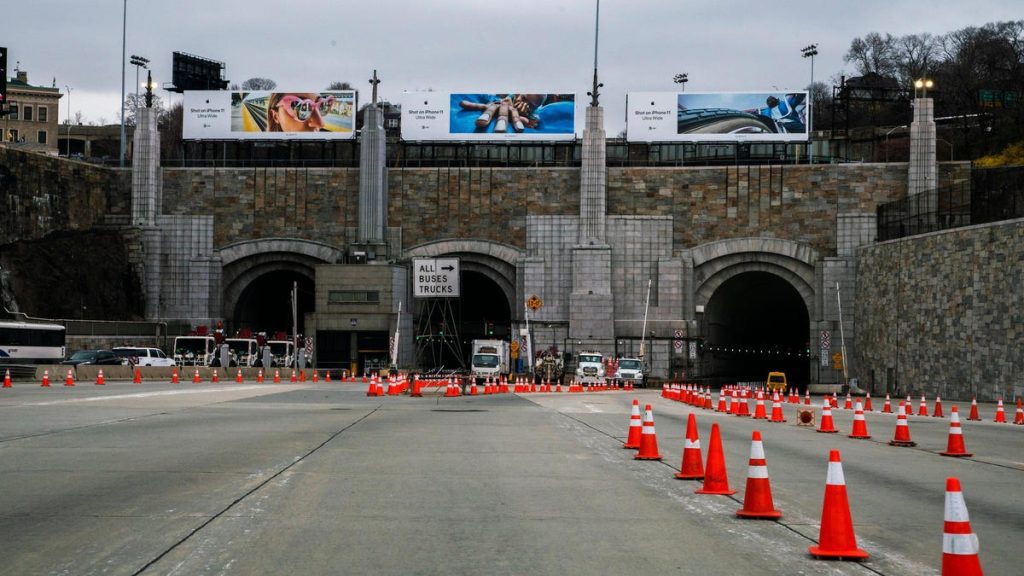Dead: Tollbooths in New York City

Photo: Eduardo Munoz Alvarez (Getty Images)
Last Sunday, the tollbooths at the Lincoln Tunnel were closed permanently. The 1.5-mile-long tunnel linking New Jersey and Midtown Manhattan in New York City will now solely utilize cashless payment methods. Drivers will either use E-ZPass, an electronic toll collection system, to pay their toll, or receive a bill in the mail based on a photo of their license plate. PIX11 reports that the physical toll plazas will remain in place for the foreseeable future, with the booths being dismantled gradually as part of regular tunnel maintenance. The Lincoln Tunnel was the final bridge or tunnel crossing in New York City that had tollbooths.
The Port Authority of New York and New Jersey, the interstate agency that manages all of the major crossings between New Jersey and New York City, has spent $500 million to install cashless toll systems at all of its bridges and tunnels since 2019. Prior to the Lincoln Tunnel, the George Washington Bridge went fully cashless last July. The Metropolitan Transportation Authority (MTA), responsible for the city’s crossings solely within New York’s state borders, took all its bridges and tunnels fully cashless in 2017.
Port Authority Chairman Kevin O’Toole said in a statement:
“Tollbooths have served us well in the past when toll collection required someone to accept coins or tickets in exchange for passage, but at some point, nostalgia must make way for advances in technology that improve our lives – which for many of us in this region revolve around our daily commutes. The deactivation of the Port Authority’s last toll booths and upgrade to a cashless electronic system is not just a sentimental footnote in the timeline of our legacy bridges and tunnels, but a key milestone in our agency’s stewardship of the bistate region’s critical infrastructure.”
According to the Port Authority, 90 percent of drivers already use E-ZPass. The agency estimated that eliminating tollbooths will collectively save 1.3 million gallons of fuel and reduce carbon dioxide emissions by 12,700 tons annually, thanks to drivers no longer having to stop, idle, and accelerate away from the booths. Not to mention that cashless tolling will also reduce commute times and the possibility of rear-end collisions.
However, that ten percent of commuters who don’t currently have an E-ZPass still represents a sizable number of drivers. The Port Authority noted that over 3.4 million vehicles went through the Lincoln Tunnel in July alone. WNBC reports that Google searches for E-ZPass Customer Service spiked by nearly 4,450 percent during rush hour yesterday. I wouldn’t be surprised if there was a sudden surge of drivers receiving toll bills through the mail.



